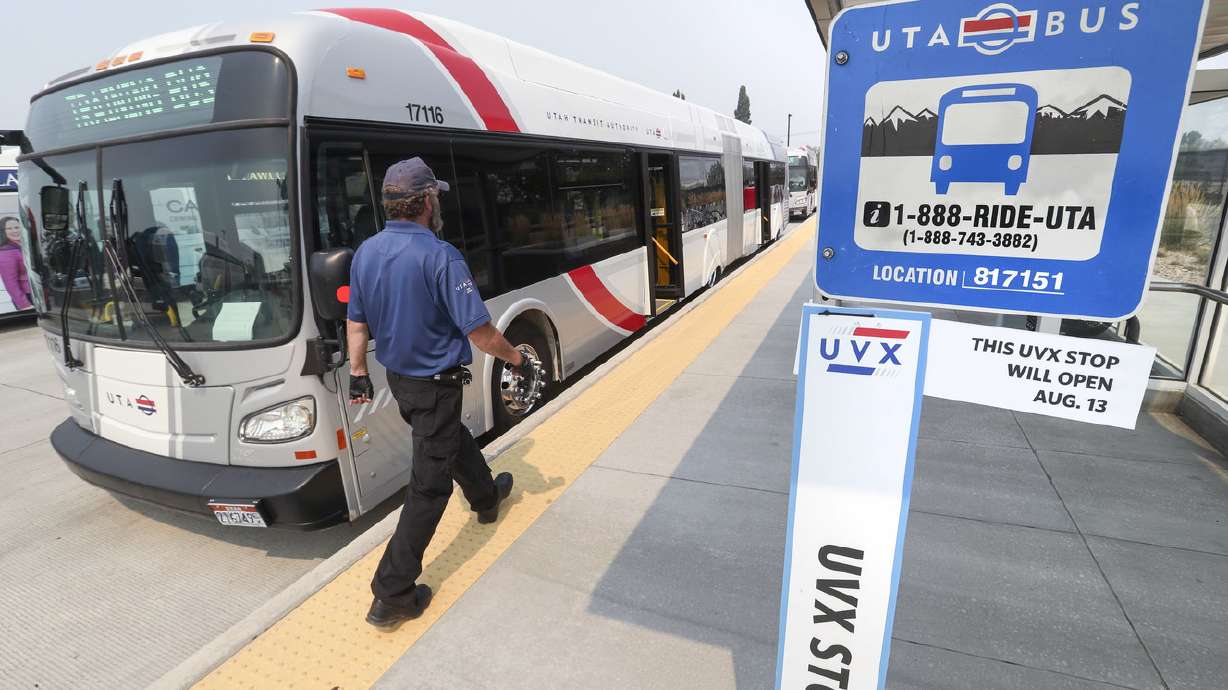The UVX system in the Provo-Orem area has been free to riders since the beginning, but the Utah Transit Authority has proposed changes that would implement a fare, along with other improvements.
The proposed changes would start Aug. 18, UTA’s Change Day. According to UTA’s official statement, changes would include the following:
- FAREPAY Card changes that would benefit frequent riders by having a maximum per-day charge
- Reduced Fare program changes that would increase eligibility to over 12,000 more riders
- UVX sunset of the Zero Fare program on the rapid bus service in Orem/Provo, where an estimated 10-15% of riders would now be charged regular fare
- Maintaining current frequency on three bus routes (Routes 39, 201, 218), and eliminating one route (Route 606) that has already been suspended and is covered by other routes
The UTA is seeking public comment through March 29 on the proposed changes. Concerned users can comment using this form provided by the UTA.
“(This) allows us to share information and raise awareness about proposed changes and gives the public the chance to share how proposed changes may impact them and how UTA can support the community should any changes be approved,” the UTA website explained.

BYU students have and will continue to have free public transportation using their student ID card; UVU students share this benefit. However, the UVX’s general ridership includes more than just students, and many are not students for much longer.
“It’s unusual to have free public transportation,” Mackenzie Moon, a BYU student majoring in dance education, said. “It makes sense that the state needs funds … they need to be able to pay their bus drivers and everything. I think everyone should have a livable wage.”
The biggest concerns with the UVX being free from fares are funding and safety, users report. Since its beginning in 2018, a federal grant has funded the system to be fare-free, providing easy access to fast public transportation.
“It does get sketchy sometimes just because anyone can get on, but I’ve always felt safe. I’ve never felt unsafe because there’s other people riding it,” Elisabeth Yske, a BYU public health major, said.
Several BYU students echoed this sentiment, explaining oftentimes people on the streets will ride free transportation up and down the line as refuge from the elements.
“You see it in a lot of free public systems. You know, it’s a place that’s warm … people will destroy the system to get out of the elements. So that’s the risk that you take when you make transit free,” Gregory Macfarlane, a BYU professor of civil engineering specializing in transportation planning, said.
He said the system was intended to operate with a fare, but the grant has been able to fund its operation until now.
While introducing a fare is expected to lower ridership, according to Macfarlane, most of the users are BYU or UVU students. Because the majority of riders can use their ID cards to allow them to ride free of charge, ridership will not lower significantly.
Since the UVX has been around for six years, it has become a part of many people’s routines and will remain a part of their routine with or without a fare, he said.
Macfarlane explained fares only make up about 15% of their operating costs; the majority of the funding comes from sales tax.
“The cost of the fare is not just the cost of paying the fare. It’s the cost of getting out your wallet and learning how to pay the fare and looking it up. So the actual burden on the consumer is a lot higher than just the $1.50,” Macfarlane said.
Students and community transit users are conflicted on the proposed changes, but the Utah Transit Authority is still taking public comment. A livestream was held on March 13, as a public meeting.




